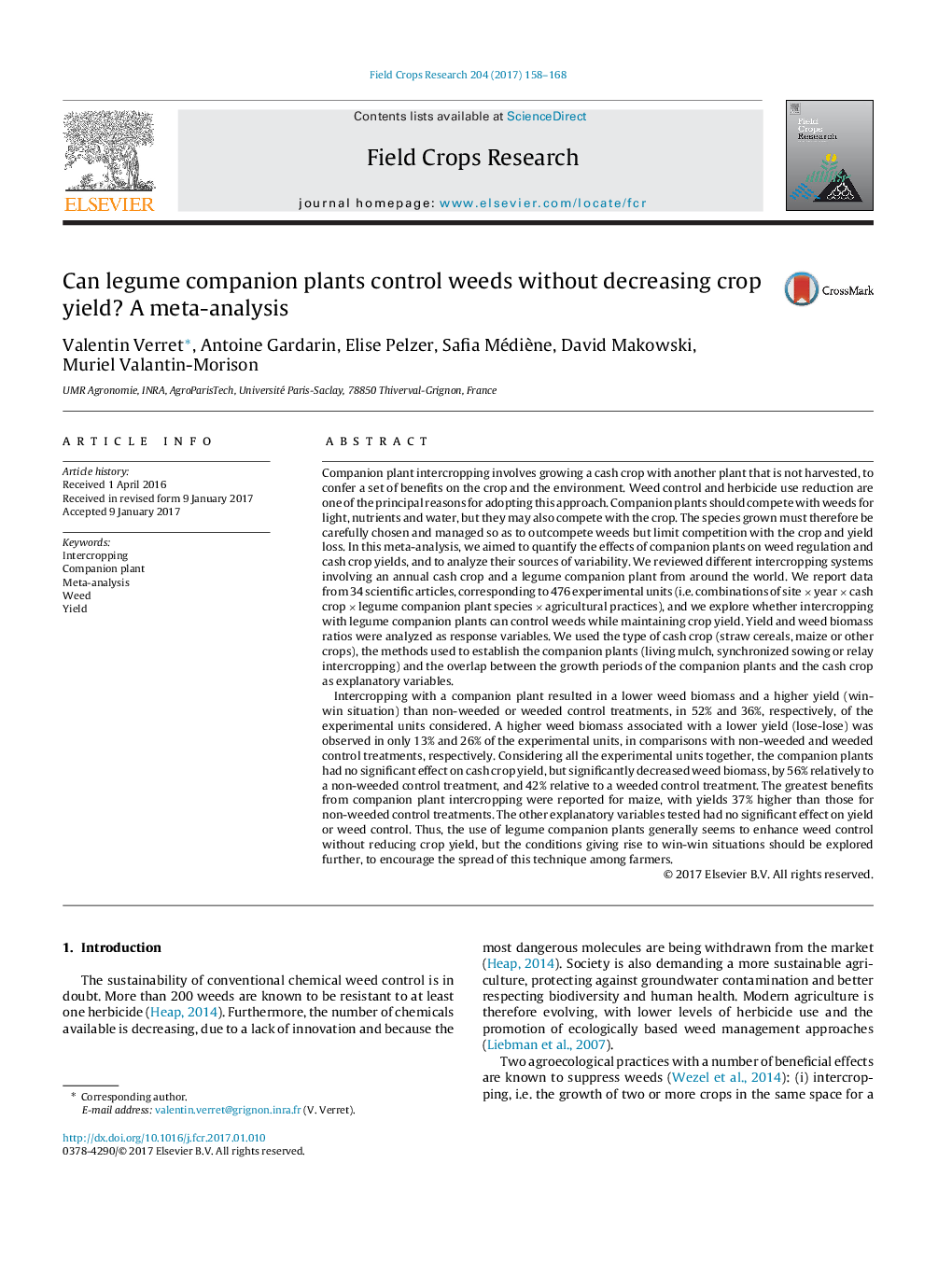| Article ID | Journal | Published Year | Pages | File Type |
|---|---|---|---|---|
| 5761618 | Field Crops Research | 2017 | 11 Pages |
Abstract
Intercropping with a companion plant resulted in a lower weed biomass and a higher yield (win-win situation) than non-weeded or weeded control treatments, in 52% and 36%, respectively, of the experimental units considered. A higher weed biomass associated with a lower yield (lose-lose) was observed in only 13% and 26% of the experimental units, in comparisons with non-weeded and weeded control treatments, respectively. Considering all the experimental units together, the companion plants had no significant effect on cash crop yield, but significantly decreased weed biomass, by 56% relatively to a non-weeded control treatment, and 42% relative to a weeded control treatment. The greatest benefits from companion plant intercropping were reported for maize, with yields 37% higher than those for non-weeded control treatments. The other explanatory variables tested had no significant effect on yield or weed control. Thus, the use of legume companion plants generally seems to enhance weed control without reducing crop yield, but the conditions giving rise to win-win situations should be explored further, to encourage the spread of this technique among farmers.
Keywords
Related Topics
Life Sciences
Agricultural and Biological Sciences
Agronomy and Crop Science
Authors
Valentin Verret, Antoine Gardarin, Elise Pelzer, Safia Médiène, David Makowski, Muriel Valantin-Morison,
